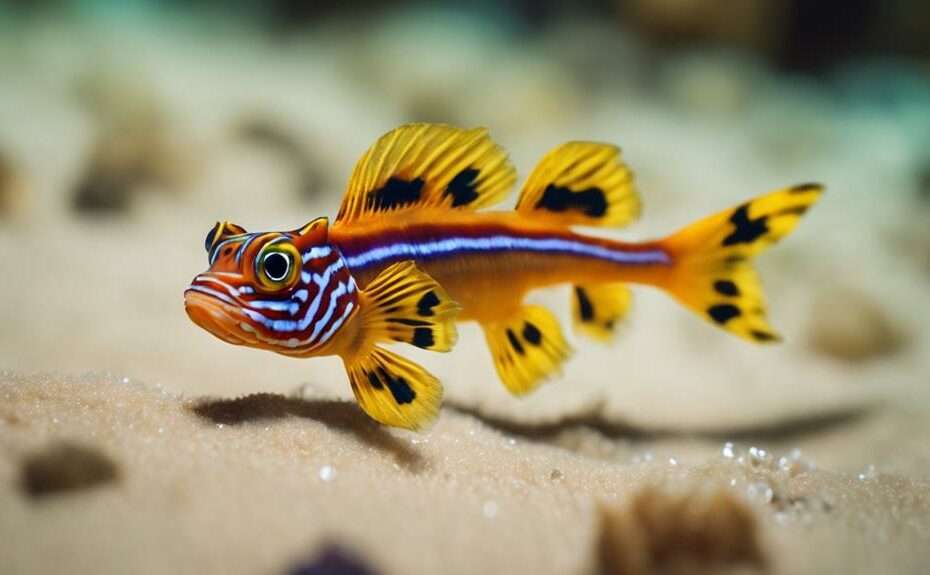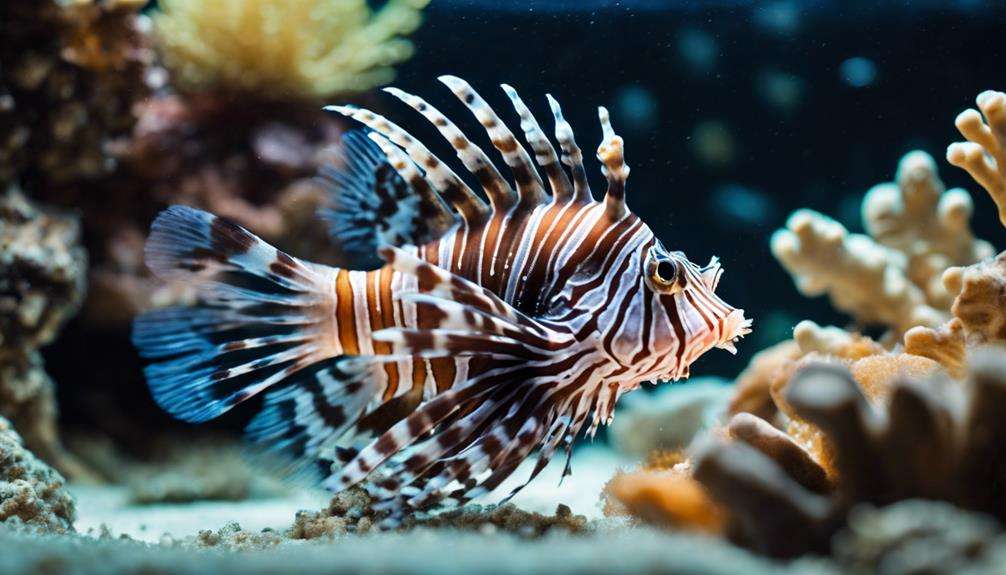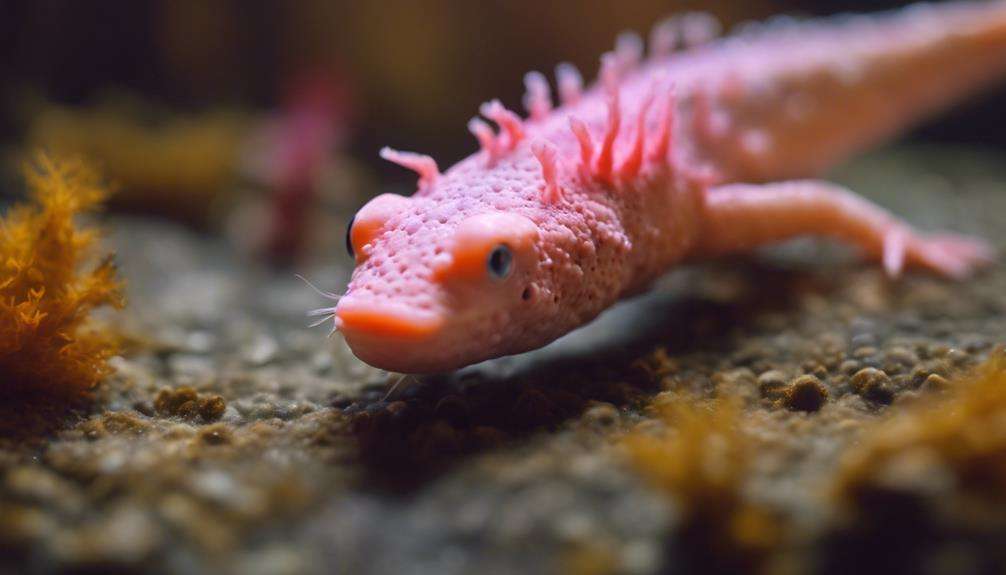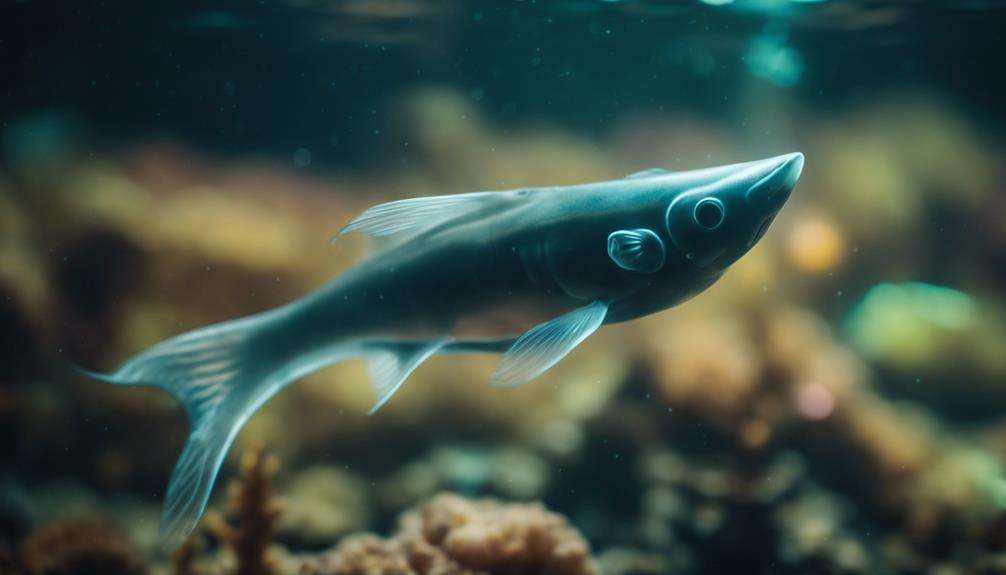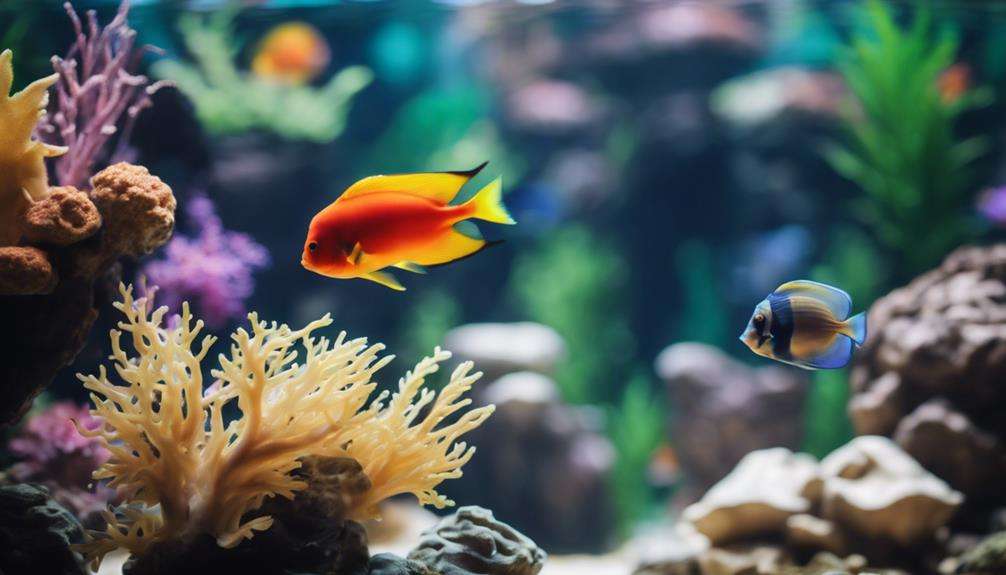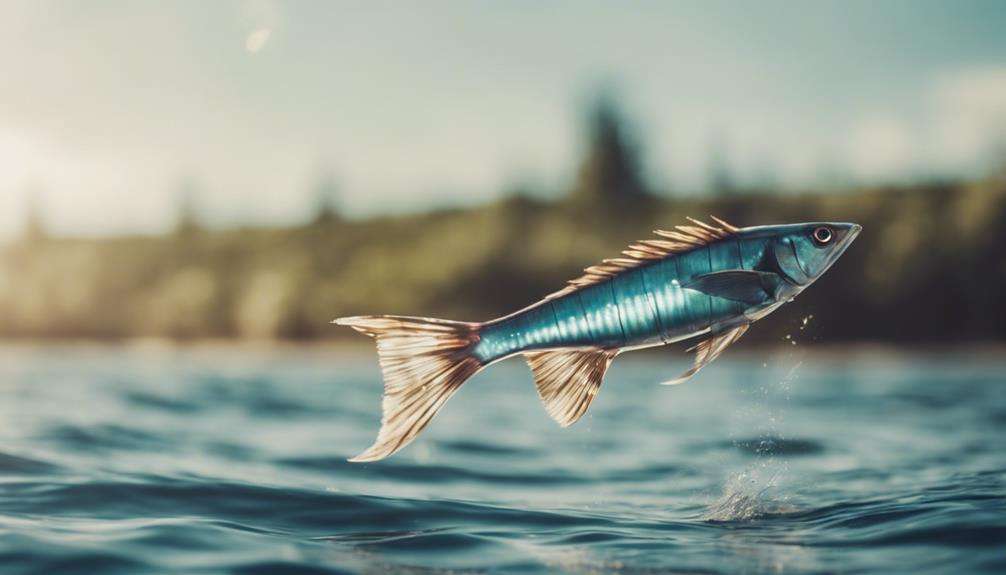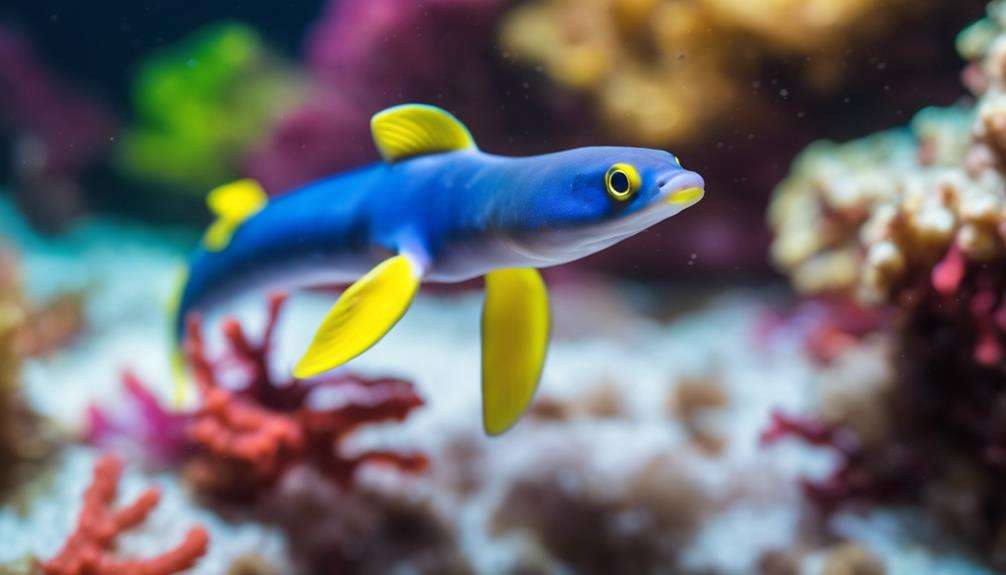You may think that caring for dragonet fish is challenging due to their unique behaviors, but with the right knowledge, it can be a rewarding experience.
Understanding how dragonets interact in their environment is crucial for their well-being. Have you ever wondered what signals dragonet fish use to communicate with each other? Their behavioral cues can be fascinating and offer insights into their social dynamics and environmental needs.
Stay tuned to uncover the intriguing world of dragonet fish behavior and how it can enhance your care practices for these mesmerizing creatures.
Key Takeaways
- Mandarin fish exhibit unique courtship rituals and adaptations for bottom-dwelling life.
- Providing a diverse diet and maintaining copepod populations are essential for their nutrition.
- Social interactions, pair bonding, and mimicking their natural habitat are crucial for successful breeding.
- Environmental enrichment with live rock, refugium, and sand beds promotes their well-being and natural behaviors.
Unique Behaviors of Dragonet Fish
Unique behaviors of dragonet fish showcase a fascinating blend of courtship rituals and specialized adaptations for life on the ocean floor. Among the most captivating species is the mandarin fish, renowned for its vibrant colors and intricate courtship displays. The male mandarin fish entices a mate through an elaborate dance, showcasing its fins and colors in a mesmerizing performance. This courtship ritual isn't just for show; it serves to establish dominance and compatibility between potential partners.
In addition to their courtship behaviors, mandarin fish exhibit specialized adaptations for their bottom-dwelling lifestyle. Their unique fins allow them to gracefully 'walk' on the ocean floor, resembling the movements of a terrestrial lizard. This adaptation enables them to navigate the sandy substrate with ease, searching for small crustaceans and other prey. As night falls, mandarin fish may even bury themselves in the sand for protection and rest, showcasing their remarkable ability to blend into their environment seamlessly.
Feeding Habits and Preferences
When considering the feeding habits and preferences of mandarin dragonets, understanding their specialized diet is crucial for their health and well-being. Mandarin dragonets primarily feed on small crustaceans like copepods and amphipods in the wild.
Due to their specialized diet, getting mandarins to accept prepared foods can be challenging. To ensure a varied diet, consider feeding them enriched brine shrimp, bloodworms, and small pellets. Training mandarins to eat frozen and live foods can help supplement their diet effectively.
It's also important to maintain copepod populations in the tank for the long-term health of mandarin dragonets. By providing a diverse diet that includes frozen food options, you can help mimic their natural feeding behaviors and promote their overall health and vitality.
Social Interactions in Dragonet Fish
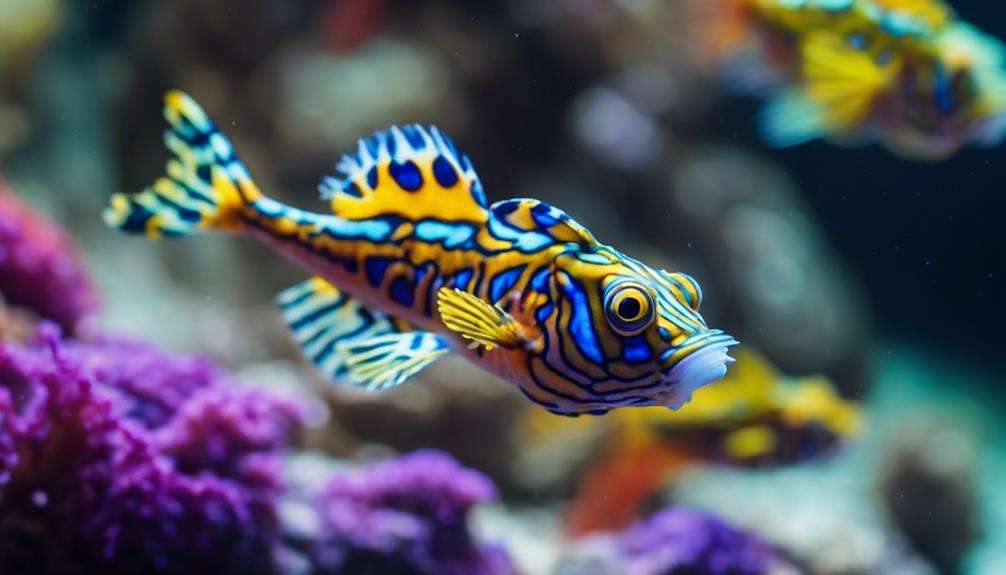
When observing dragonet fish, you'll witness fascinating behaviors like pair bonding and intricate courtship rituals that showcase their social complexity.
These interactions are crucial for their overall well-being, as they rely on social cues for breeding and foraging.
Understanding these social dynamics can provide valuable insights into the health and behavior of these captivating fish in a captive environment.
Pair Bonding Behavior
Pair bonding behavior in dragonet fish involves the formation of strong social connections with a mate, characterized by elaborate courtship displays performed by male dragonets to attract a female partner. These displays can be mesmerizing, showcasing the male's vibrant colors and intricate movements to woo the female.
Once a pair bond is established, dragonets often remain close to each other in the tank, engaging in synchronized swimming patterns and even sleeping side by side. This bond not only fosters companionship but also helps reduce aggression between dragonets sharing the same space.
However, territorial behavior may manifest as the pair establishes and defends their bond, creating a fascinating dynamic within the tank. Understanding and appreciating this pair bonding behavior is crucial for providing optimal care for these captivating fish.
Courtship Rituals
Engage with the mesmerizing courtship rituals of dragonet fish, where vibrant displays and intricate dances captivate potential mates in a colorful underwater spectacle. These courtship rituals are a sight to behold, as male dragonets showcase their finest colors and fin displays to signal their readiness to breed.
Circling, darting, and flaunting their dorsal fins, males go to great lengths to impress the discerning females. The females carefully observe these displays, selecting their mates based on physical prowess and overall health.
Once a successful courtship is established, dragonet fish form monogamous pairs that work together diligently to protect their territory and offspring. Witness the beauty and complexity of dragonet courtship rituals, a testament to nature's fascinating intricacies.
Reproduction and Breeding Patterns
Breeding mandarin dragonet fish involves intricate mating rituals where males showcase vibrant colors and dance to attract females. Once a female is enticed, she'll lay adhesive eggs on the substrate or in crevices, which the male will then fertilize. What sets mandarin dragonets apart from many marine fish is their exceptional parental care – both parents may diligently protect the eggs from predators until they hatch. The incubation period for mandarin dragonet eggs typically lasts between 24 to 48 hours, with factors such as water temperature influencing the duration.
In home aquariums, successfully breeding mandarin dragonets poses a challenge due to their specific dietary requirements for the fry and the significant space needed for breeding. It's crucial to replicate their natural habitat as closely as possible to encourage breeding behavior. Providing an environment that mimics their natural ecosystem can help create the ideal conditions for mandarin dragonets to reproduce successfully.
Environmental Enrichment for Dragonets
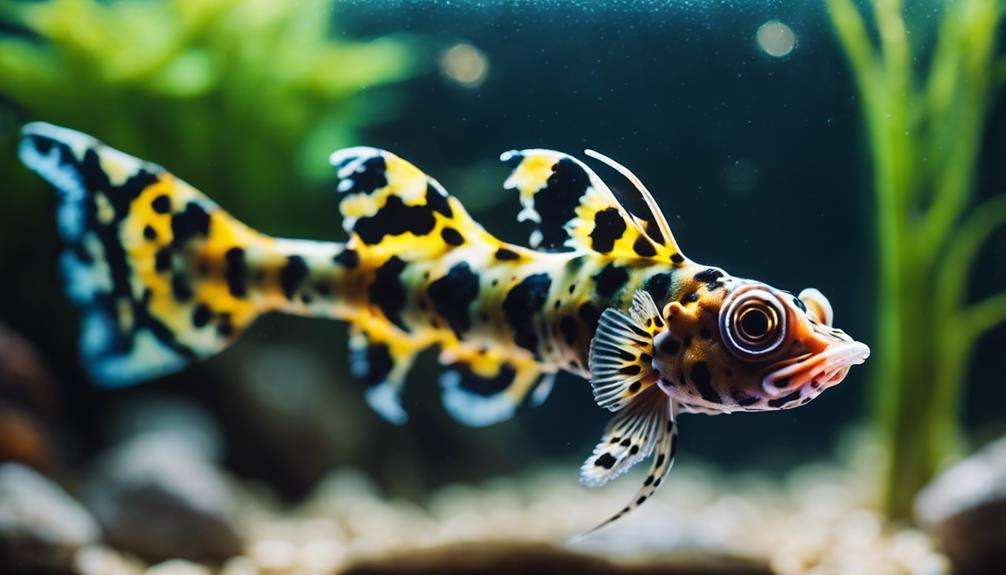
To cultivate a thriving environment for your dragonet fish, enrich their surroundings with elements that replicate their natural habitat and stimulate their innate behaviors.
Environmental Enrichment for Dragonets:
- Live Rock: Providing live rock with crevices and caves can mimic their natural habitat and offer hiding spots for dragonets.
- Refugium with Macroalgae: Introducing a refugium with macroalgae can help sustain copepod populations for dragonets to graze on.
- Sand Beds: Incorporating sand beds in the aquarium allows dragonets to sift through for small invertebrates, stimulating natural behaviors.
- Floating Feeding Rings: Utilizing floating feeding rings can help target feed dragonets with live or frozen foods, encouraging active foraging behavior.
Common Health Issues in Dragonet Fish
One of the critical aspects of caring for dragonet fish is understanding and addressing the common health issues they may encounter in aquarium settings. Starvation is a significant concern for mandarins, as they heavily rely on copepods for sustenance. Without an adequate population of copepods in the tank, these beautiful fish can struggle to find enough food, leading to malnutrition and potential health issues. Ensuring a thriving copepod population or offering suitable copepod replacements is crucial to prevent starvation in dragonet fish.
Additionally, aggression from tankmates can cause stress and injuries to dragonets. It's essential to choose tankmates carefully, opting for peaceful companions that won't harass or compete aggressively with the mandarins.
Maintaining stable water parameters is also vital, as fluctuations can weaken the fish's immune system, making them more susceptible to infections and parasitic infestations like flukes or ich.
Lastly, providing a varied and balanced diet is key to preventing nutritional deficiencies in mandarins, ensuring their overall health and well-being.
Behavioral Challenges and Solutions
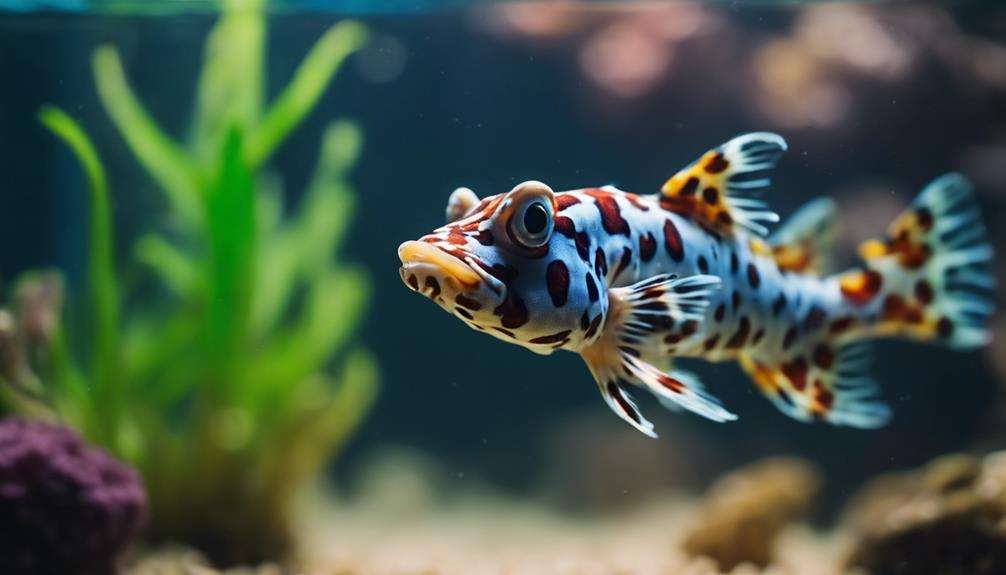
When caring for mandarin dragonet fish, overcoming behavioral challenges, especially their reluctance to transition to prepared foods, is crucial for their well-being and longevity in aquarium settings. Understanding the intricacies of their behavior is key to ensuring a thriving environment for these captivating creatures.
Here are some essential tips to help you navigate and address behavioral challenges:
- Training Techniques: Implement training methods to encourage mandarin dragonets to accept frozen and live foods, gradually transitioning them towards a more diverse diet.
- Tank Size Matters: Provide a spacious tank environment with plenty of live rock and hiding spots to mimic their natural habitat, reducing stress and promoting natural behavior.
- Social Dynamics: Mandarin dragonets exhibit peaceful social behavior with other fish species, but ensure tank mates are compatible to prevent aggression or competition during feeding times.
- Observation and Adaptation: Regularly observe your mandarin's behavior to assess their well-being and make necessary adjustments to the tank setup, including water quality and tank mates, to promote a harmonious environment for these unique fish.
Frequently Asked Questions
What Is the Behavior of a Dragonet Fish?
Dragonet fish showcase captivating behavior, with their unique swimming patterns and constant foraging habits for small crustaceans and copepods. They display territorial tendencies, especially males defending their space. Their feeding habits reveal their intricate nature.
Are Mandarins Hard to Care For?
Caring for mandarins can be challenging due to their specific dietary needs. Tank mates should be chosen carefully to ensure their well-being. Providing a suitable environment with ample copepod populations is crucial for their health.
Are Mandarin Dragonets Hard to Keep?
Keeping mandarin dragonets can be challenging due to their specific dietary requirements. Their feeding habits, heavily reliant on copepods, make it hard to transition them to prepared foods. You must provide a varied diet for success.
How Do You Keep Mandarin Dragonets Alive?
To keep mandarin dragonets alive, focus on breeding techniques. Ensure a well-established tank with live rock for copepods. Offer enriched brine shrimp, bloodworms, and pellets. Train them to accept frozen/live foods. Larger tanks support growth.
Conclusion
You may doubt your ability to understand and care for dragonet fish, but with dedication and knowledge, you can create a thriving environment for these unique marine creatures.
By observing their behaviors, providing proper nutrition, and creating a stimulating environment, you can overcome any challenges that may arise.
Remember, with passion and attention to detail, you can create a beautiful and harmonious ecosystem for your dragonet fish to thrive in.
